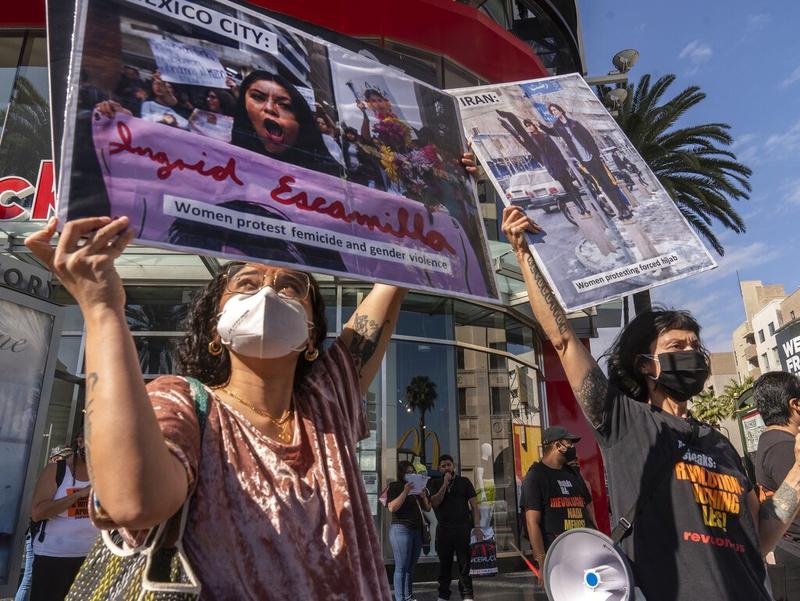 Protesters take part in an event named "Gender Reveal Party Like No Other," to commemorate International Women's Day and protest against femicide and gender violence in Los Angeles on March 8, 2021. (DAMIAN DOVARGANES/AP)
Protesters take part in an event named "Gender Reveal Party Like No Other," to commemorate International Women's Day and protest against femicide and gender violence in Los Angeles on March 8, 2021. (DAMIAN DOVARGANES/AP)
GENEVA - Nearly one in three women worldwide is subjected to physical or sexual violence during her lifetime, pervasive criminal behavior that has increased during the pandemic, the World Health Organization (WHO) said on Tuesday.
The UN agency urged governments to prevent violence, improve services for victims and tackle economic inequalities that often leave women and girls trapped in abusive relationships.
READ MORE: Aussies condemn violence against women amid rape claims
Boys should be taught in school about the need for mutual respect in relationships and mutual consent in sex, WHO officials said.
A husband or intimate partner is the most common perpetrator and a disproportionate number of victims are in the poorest countries, the WHO said
“Violence against women is endemic in every country and culture, causing harm to millions of women and their families, and has been exacerbated by the COVID-19 pandemic,” WHO director-general Tedros Adhanom Ghebreyesus said.
Some 31 percent of women aged 15-49, or up to 852 million women, have experienced physical or sexual violence, the WHO said in what it called the largest-ever such study, encompassing national data and surveys from 2000-2018.
A husband or intimate partner is the most common perpetrator and a disproportionate number of victims are in the poorest countries, it said. True figures are likely far higher due to under-reporting of sexual abuse, a heavily-stigmatized crime.
“These numbers are very shocking and really are sort of a wake-up call for governments to be doing much more to prevent this violence,” report author Claudia Garcia-Moreno said.
In some regions, more than half of women face violence at some point, she told Reuters, citing Oceania, sub-Saharan Africa and southern Asia.
Countries with the highest prevalence include Kiribati, Fiji, Papua New Guinea, Bangladesh, the Democratic Republic of Congo, and Afghanistan, WHO data show.
The lowest rates are in Europe, up to 23 percent, over a lifetime.
ALSO READ: Nations join forces to stop high level of violence against women
Violence starts at an “alarmingly young” age, the WHO said.
One in four adolescent girls aged 15-19 who have had a relationship have been subjected to either physical or sexual violence, Garcia-Moreno said.
“This is a very important and formative time in life. And we know that the impacts of this violence can be long-lasting and can affect physical and mental health and lead to unwanted pregnancies and other complications,” she said.


